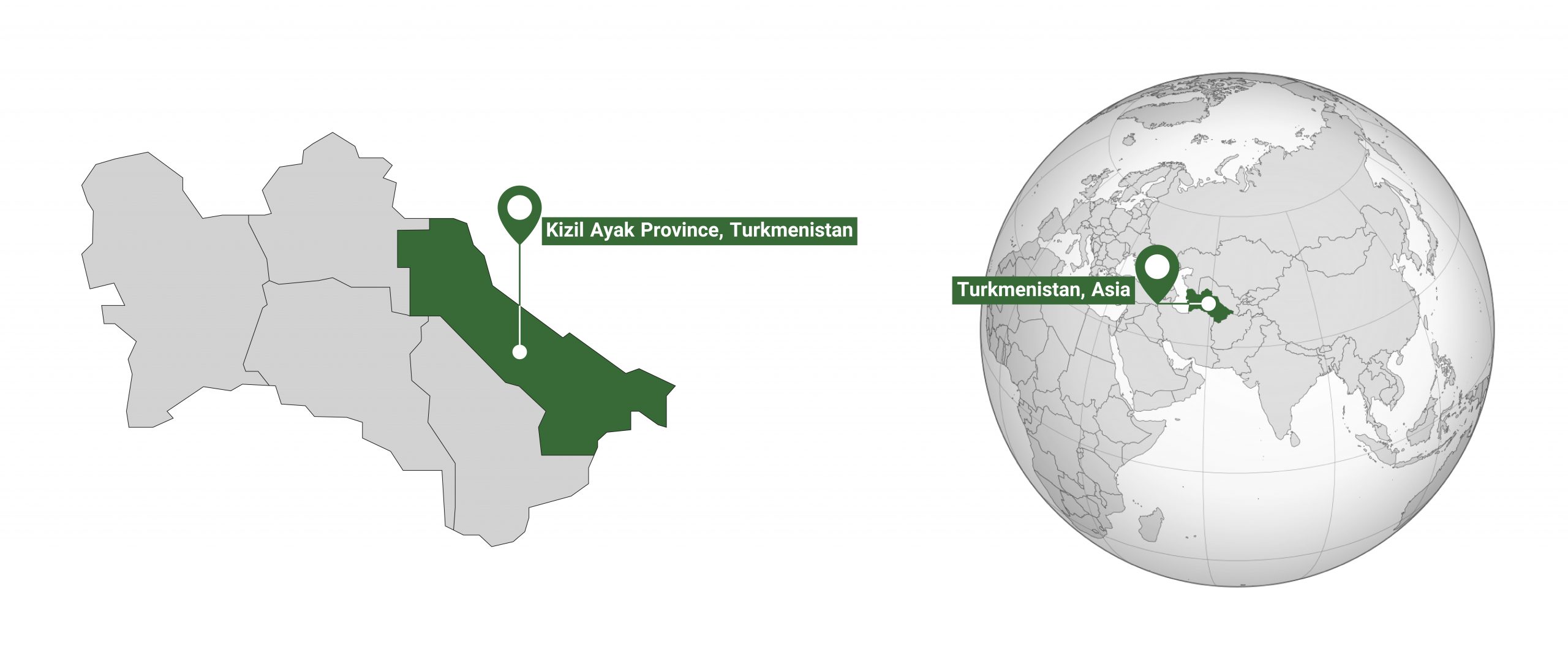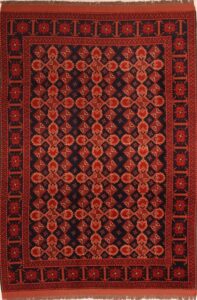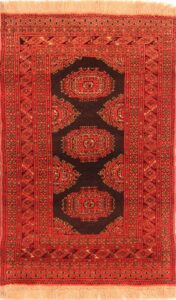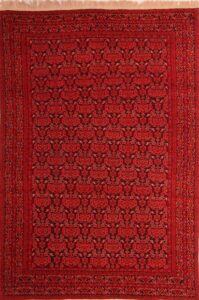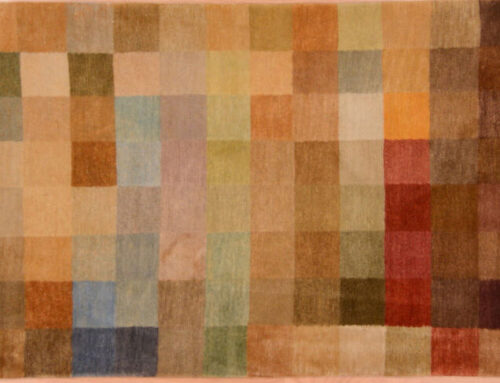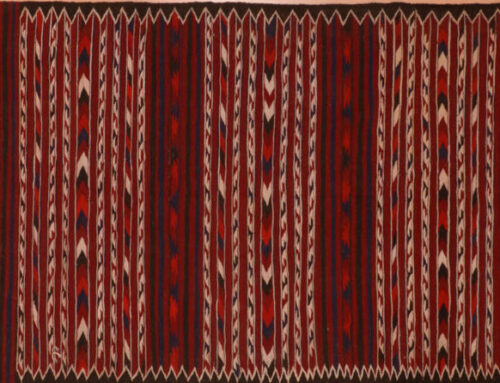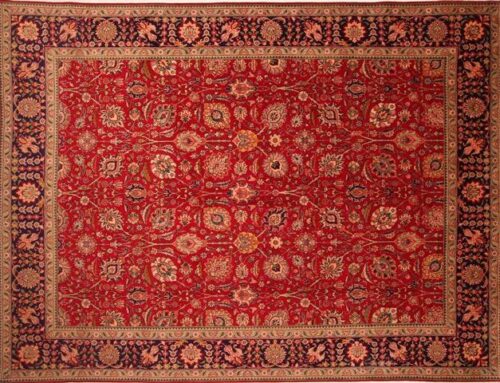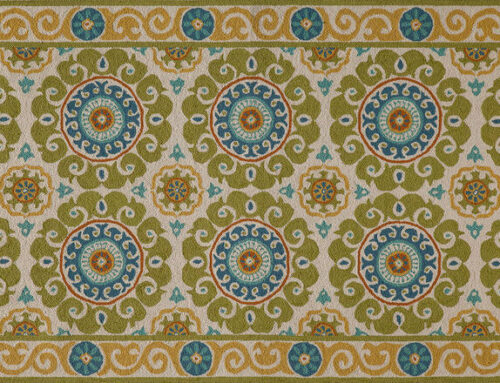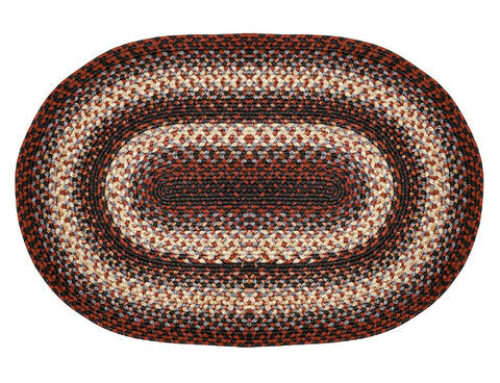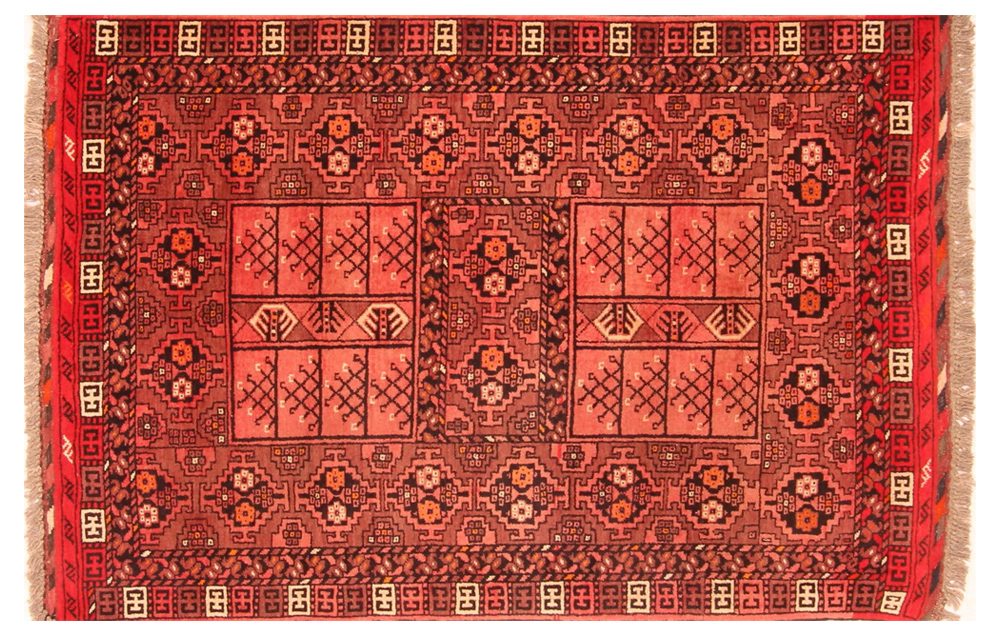
Origin of Kizil Ayak Rugs 1
The Kizil Ayak are a tribe inhabiting the area near the Amu Darya River in the eastern region of Turkmenistan. The Turkmen Ersari tribe mainly populates this area.
History of Kizil Ayak Rugs
The Kizil Ayak is a smaller, distinct entity from the Ersari, and their weavings are noticeably different. Kizil Ayak rugs are known in the trade from the mid-nineteenth century.
This group weaves Engsi Rugs (tent doors), Juval (storage or transport bags), Torba (tent storage bags), and other tribal items. The carpet sizes range up to twelve feet by seven feet. Early Kazil Ayaks are enjoyed by collectors and are in demand in the antique market.
Characteristics of Kizil Ayak Rugs
-
Material and Knots
The foundation is usually composed of goat hair for the warp and wool for the weft, and the pile is good-quality sheep wool.
Rugs are made consistently with the Persian (asymmetric) knot and are finer in quality compared with other Lebap-region tribes.
-
Color
Kizil Ayaks have a warm rust-red coloration in the field. Dark blue, burnt orange, beige, and ivory are used for the design details. Dark brown is employed for the pattern outlines.
-
Design and Pattern
The weavers make geometric designs in allover styles. The most popular pattern features Gul (flower) motifs in two sizes, the larger of which is usually called the Tauk Nuska Gul, which is repeated vertically and horizontally throughout the field. The gul sizes are woven as major (larger) and minor (smaller) motifs of alternating rows in a balanced arrangement. The major guls usually feature pairs of stylized animals woven inside the quarters. The borders are generally narrow and feature guls, or leaves and vines alternating with guls, or tribal design motifs.
Collections
- Kizil Ayak Rug | © Rugman
- Kizil Ayak Rug | © Rugman
- Kizil Ayak Rug | © Rugman

